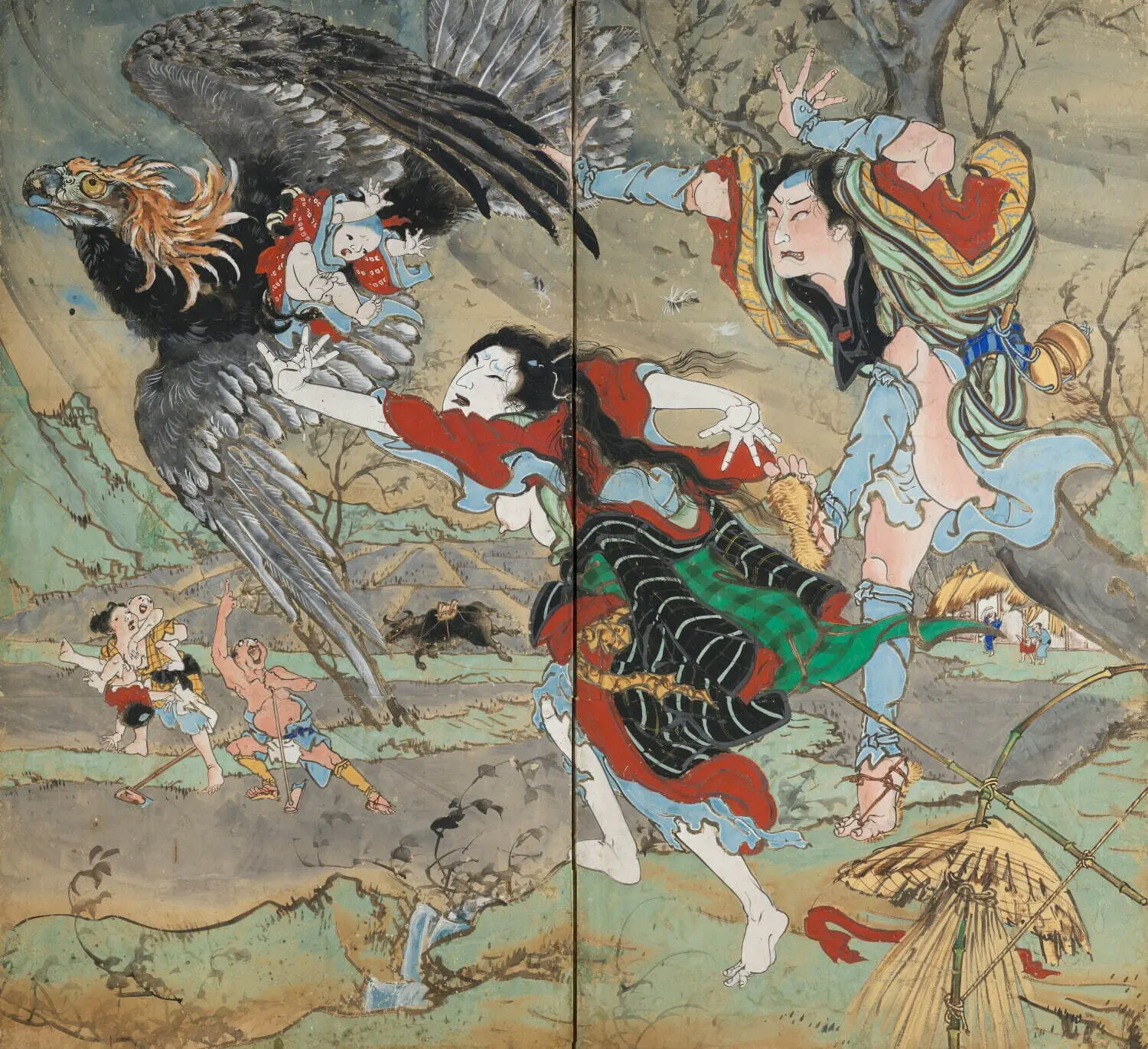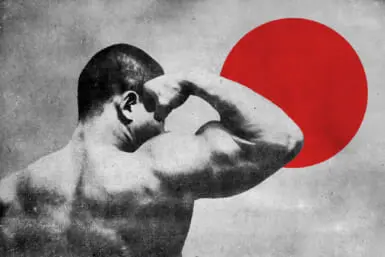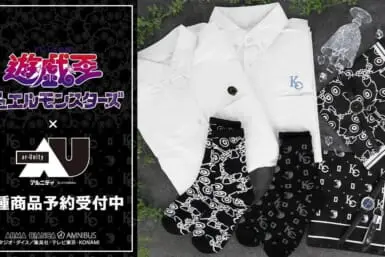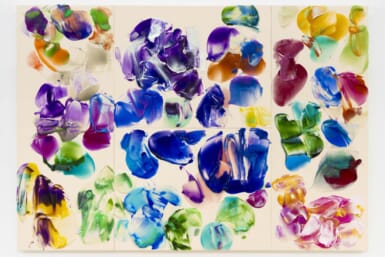When the art of the Edo period comes to mind, it is likely not conflated with the blood, sex and gore that can be found in Ekin’s work from the mid 1800s. Known under many names throughout the years, but typically remembered as Ekin, the prodigious artist’s initial success was cut short when he was allegedly framed as the culprit of an art forgery.
Following the scandal and a mysterious 10-year disappearance, Ekin reappeared and entered the world of Kochi theater. Focusing on the most horrible scenes of kabuki plays, he made a bloody splash in the world of theater panel art with his gory and raunchy paintings which, enriched with a cheeky wit, managed to win over his audience.
A Painting Prodigy
Born in 1812, Ekin, also known as Kinzo Hirose, as well as many other names throughout his lifetime, began painting from a young age. When he was 16, he studied under renowned painters and went on to finish what was meant to be a 10-year art program in just 3 years. He then served as a painter for the aristocracy living in Kochi (known as Tosa at the time) while still in his youth.
Ekin’s early success, however, would soon be turned on its head when he was commissioned by an art dealer to copy the work of a famous artist. At the time, making copies of renowned works was a common practice and was not illegal so long as the copy did not include a replica of the original artist’s seal.
When this particular copy by Ekin was sold by the dealer, though, it somehow also included a forgery of the original artist’s seal. Ekin found himself facing charges of forgery, despite his likely innocence. He was swiftly fired from his post and banned from any future positions within the aristocracy.
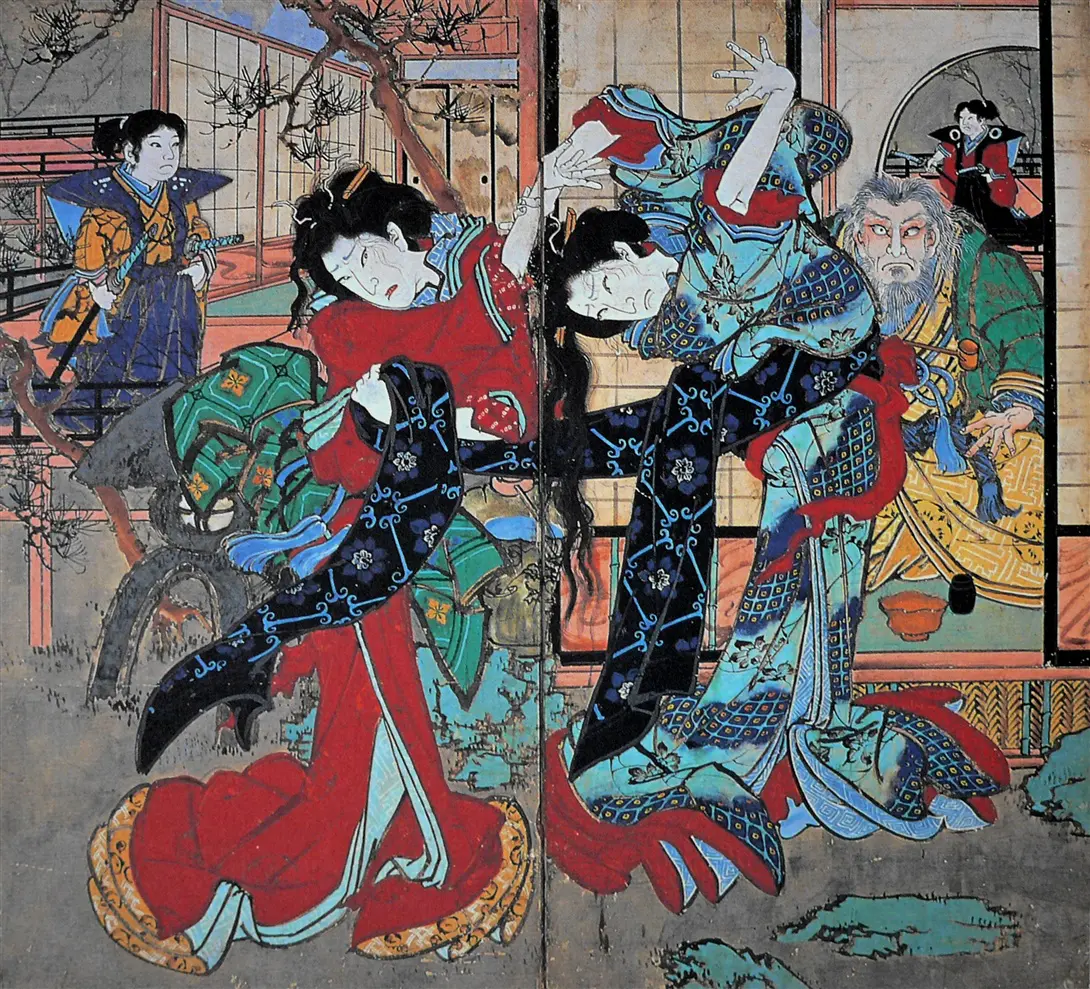
Ekin’s Mysterious Disappearance and Triumphant Return
After this fall from grace, Ekin completely disappeared for 10 years. Despite some speculation, no one knows where he went during this time, and it remains a mystery to this day. Whatever he was doing, it must have been pretty extreme based on the works he produced upon his return, which were full of blood, sex and gore.
After a decade away, Ekin went back to Kochi. Working in an old sake cellar, converted to a studio that belonged to his aunt, he painted for the townspeople and became involved with kabuki theater. In this role, he painted multi-panel folding screens used to decorate the sets of plays.
Unbridled by the restraints of high society commissions, Ekin’s panels became much more humorous and gruesome, depicting gory, blood-spattered scenarios from quintessential kabuki narratives. His way of effectively combining multiple key scenes of a narrative within the composition of a single screen has often been credited as an early influence on manga.
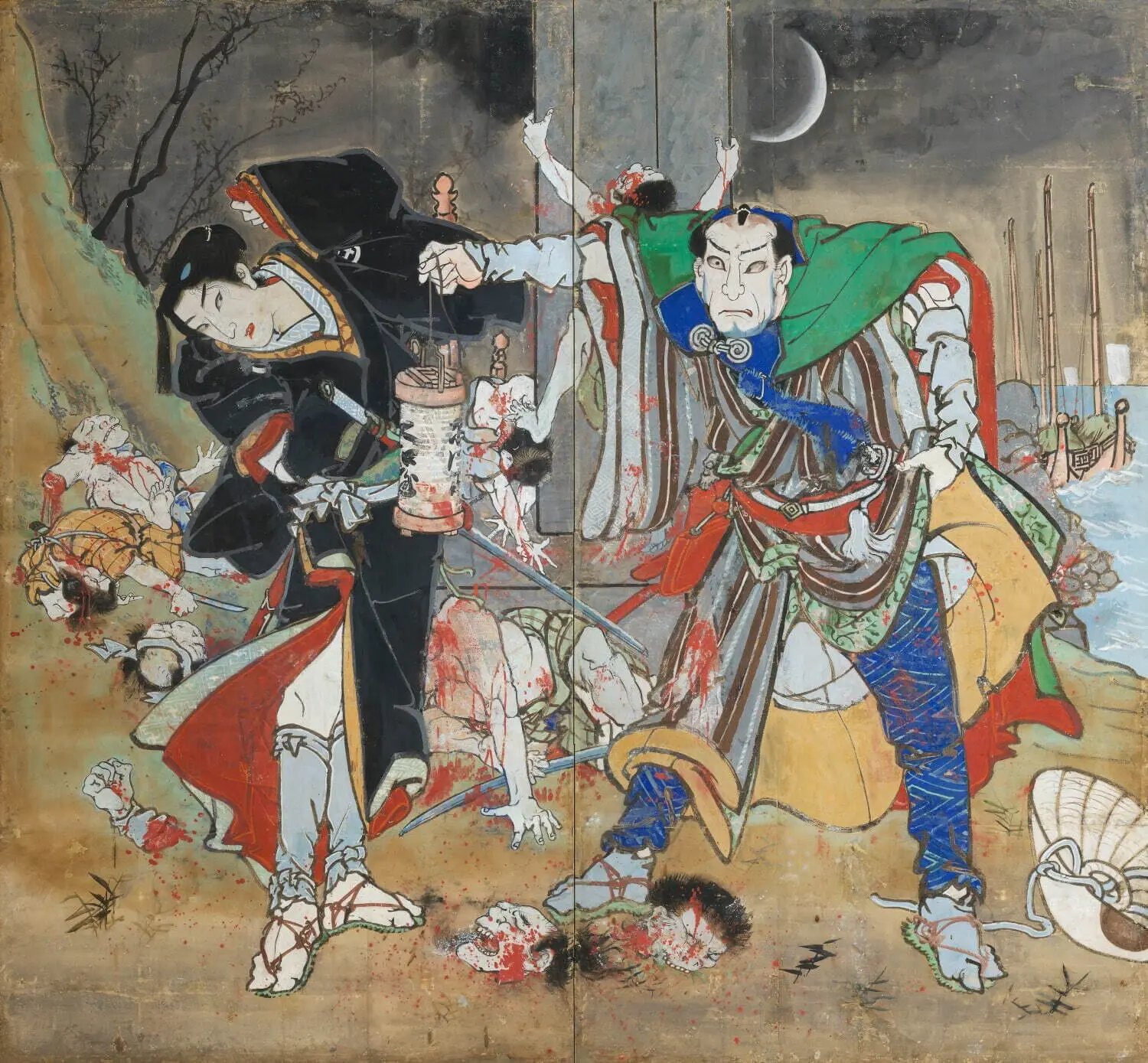
Unrestrained Creativity
Ekin depicted some of the most gory scenes of kabuki theater in his panels, from slit throats to spilling guts. He created his distinctive red color — which is believed to scare off evil spirits — by hand, using minerals found within Kochi itself.
The artist also hid his seal and secret (often raunchy, humorous or demonic) images in inconspicuous areas of the painting, from lanterns, to the crests of samurai warriors, subtly revealing the hidden motives or intentions of its characters.
A larger-than-life figure standing at around 6-foot tall, Ekin was well-thought of during his lifetime and even painted lanterns and kites for the townspeople. He was an immensely prolific artist, and over 200 of his works have survived to this day.
Ekin Festivals and Ekingura
Every July, Akaoka, Konan city, holds a lively Ekin festival and a more contemplative summer festival to celebrate the artist. During the summer festival, the original panels are displayed by candlelight around Suruda Hachimangu Shrine and visitors can spy the works up close bearing paper lanterns.
Streetlights, store lights and even vending machine lights are turned off to protect the paintings. While taking pictures is allowed, using flash is forbidden.
Don’t worry if you aren’t in Kochi in time for the festivals as you can enjoy Ekin’s displays at Ekingura, the official museum of the artist in Akaoka. Dedicated to his work and legacy, the museum includes a dimly lit room where you borrow a paper lantern to view reproductions of the folding screen paintings.
Two of Ekin’s originals, changing on a rotating basis throughout the year, are also viewable through peepholes in a room recreating his sake cellar studio. Details on the paintings and on Ekin’s life are available in English via a tablet that can be borrowed from the front desk. Photography is not allowed in most parts of the museum.

